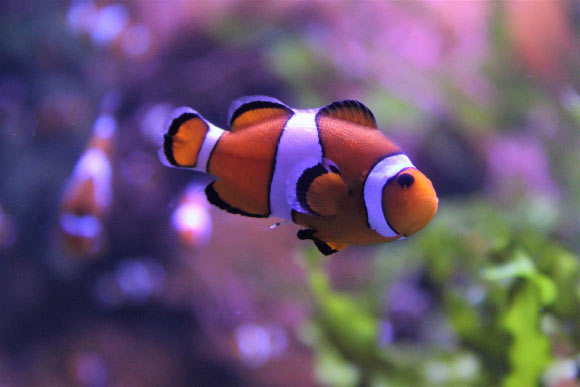Recognizable from the starring role in the film ‘Finding Nemo,’ the clown anemonefish (Amphiprion percula) also shrink in order to avoid social conflict, according to a paper published in the journal Science Advances.

“The clown anemonefish and their magnificent sea anemone hosts, Radianthus magnifica, present an opportunity to investigate how challenging environmental and social conditions might interact to influence growth,” said lead author Melissa Versteeg, a Ph.D. researcher at Newcastle University, and her colleagues.
“Anemonefish live on Indo-Pacific coral reefs, where heat stress events are increasingly common and severe, while reef inhabitants often live close to their thermal tolerance limits.”
“These heat stress events can have negative effects on anemones and their resident anemonefish.”
“Clown anemonefish live in social groups, composed of a breeding pair with a dominant female and subdominant male, and a small number of subordinate nonbreeders.”
“The growth and size of clown anemonefish is related to environmental and social conditions: dominant fish grow to match the size of their anemone and, presumably, the resources available to them; subordinate fish grow to maintain a specific size ratio with respect to their immediate dominant, thereby avoiding conflict and eviction.”
In the study, Versteeg and co-authors measured the length of 134 clownfish every month for five months, and monitored the water temperature every 4-6 days, during a marine heatwave which are becoming increasingly common as a result of climate change.
The work was conducted in collaboration with Mahonia Na Dari Conservation and Research Centre, in Kimbe Bay, Papua New Guinea.
The results reveal the remarkable ability of clownfish to shrink, i.e. they can get shorter, in response to heat stress.
Shrinking increased individuals’ chances of surviving the heat stress event by as much as 78%.
The study also shows that coordination is important for…
Read the full article here
